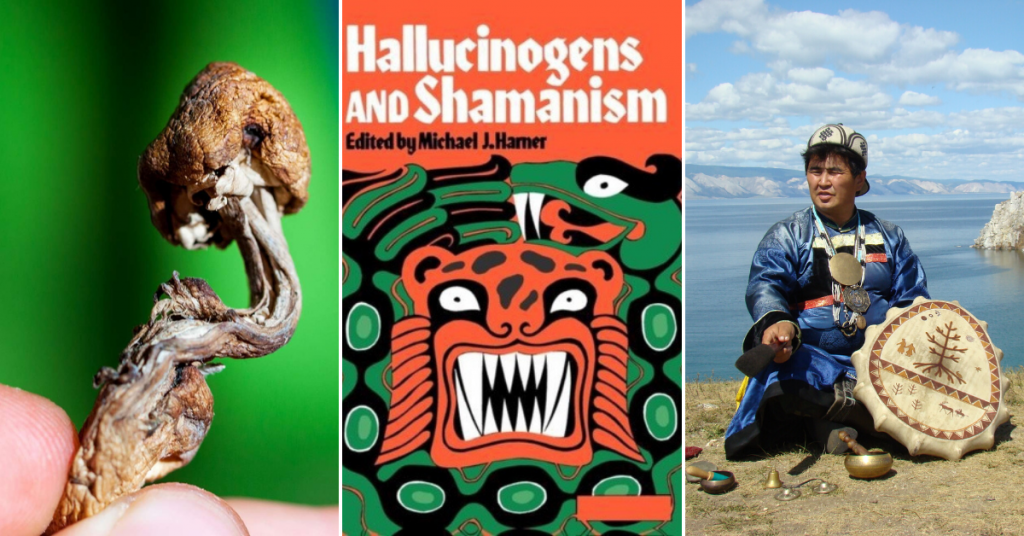Monoamine oxidase inhibitors in South American hallucinogenic plants: tryptamine and beta-carboline constituents of ayahuasca
Abstract
Ayahuasca is a hallucinogenic beverage derived by boiling the bark of the Malpighiaceous liana Banisteriopsis caapi together with the leaves of various admixture plants, viz. Psychotria viridis, Psychotria carthagenensis, or Diplopterys cabrerana. B. caapi contains harmine, harmaline, and tetrahydroharmine while the admixtures contain N,N-dimethyltryptamine (DMT). DMT, a potent hallucinogen, is inactive orally due to degradation by visceral monoamine oxidase (MAO). The β-carbolines, however, are highly active reversible inhibitors of MAO and may protect the DMT from deamination by MAO and render it orally active. This mechanism has been proposed to underlie the oral activity of ayahuasca but has not been experimentally confirmed. In the present study the constituents of the admixture plants and the alkaloids of eight ayahuasca samples from Peru were qualitatively and quantitatively analyzed using two-dimensional thin-layer chromatography (TLC), high pressure liquid chromatography (HPLC) and gas chromatography/mass spectrometry (GC/MS).
Several B. caapi cultivars were quantitatively compared for variations in alkaloid content. Three admixture plants used rarely in the manufacture of ayahuasca were also screened for alkaloids. A selected sample of β-carbolines were screened for activity as MAO inhibitors using an in vitro assay system, and structure/activity relationships were compared. Inhibition observed with single compounds was compared with the activity of selected samples of ayahuasca which were screened in the system and also with the activity of mixtures of β-carbolines. The levels of DMT and β-carbolines found in the ayahuasca samples examined in the present study were an order of magnitude greater than the levels reported in a previous study. Ayahuasca was found to be an extremely effective inhibitor of MAO in vitro and the degree of inhibition was directly correlated with the concentration of MAO-inhibiting β-carbolines. Inhibition experiments using mixtures of β-carbolines indicated that their effects in combination are additive, rather than synergistic or antagonistic. Implications of the results in understanding the pharmacology of ayahuasca are discussed.
McKenna, D. J., Towers, G. N., & Abbott, F. (1984). Monoamine oxidase inhibitors in South American hallucinogenic plants: tryptamine and β-carboline constituents of ayahuasca. Journal of ethnopharmacology, 10(2), 195-223. 10.1016/0378-8741(84)90003-5
Link to full text

 k, Chilean-American psychiatrist Claudio Naranjo takes us on a scientific adventure through his groundbreaking research into new experiential methods of psychotherapy facilitated by psychedelic substances. The Healing Journey reveals these consciousness-expanding compounds to be fascinating therapeutic tools that are now—40 years after the original publication—gaining wider recognition in Western clinical and academic circles.
k, Chilean-American psychiatrist Claudio Naranjo takes us on a scientific adventure through his groundbreaking research into new experiential methods of psychotherapy facilitated by psychedelic substances. The Healing Journey reveals these consciousness-expanding compounds to be fascinating therapeutic tools that are now—40 years after the original publication—gaining wider recognition in Western clinical and academic circles. Anthropologists have long been fascinated by the worldview and religious beliefs of primitive peoples. Only recently, however, with the surge of interest in hallucinogenic agents in our own culture, have researchers begun to acknowledge the essential role of such substances in the cosmology of many of these primitive societies. In this unusual collection, ten original studies explore the use of hallucinogens in shamanism: the ancient and widespread practice of invoking a trance state to perceive and manipulate supernatural forces.
Anthropologists have long been fascinated by the worldview and religious beliefs of primitive peoples. Only recently, however, with the surge of interest in hallucinogenic agents in our own culture, have researchers begun to acknowledge the essential role of such substances in the cosmology of many of these primitive societies. In this unusual collection, ten original studies explore the use of hallucinogens in shamanism: the ancient and widespread practice of invoking a trance state to perceive and manipulate supernatural forces.